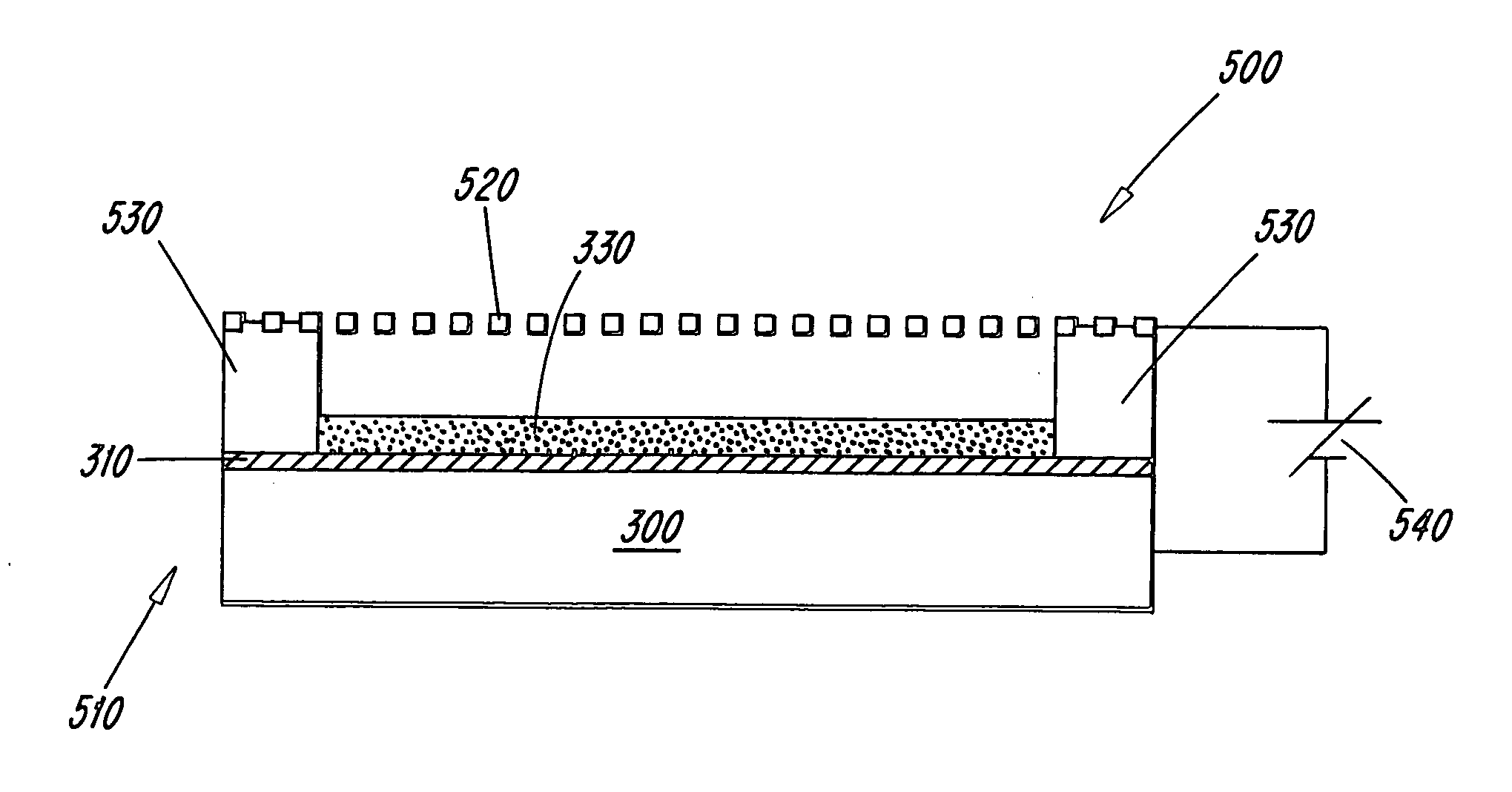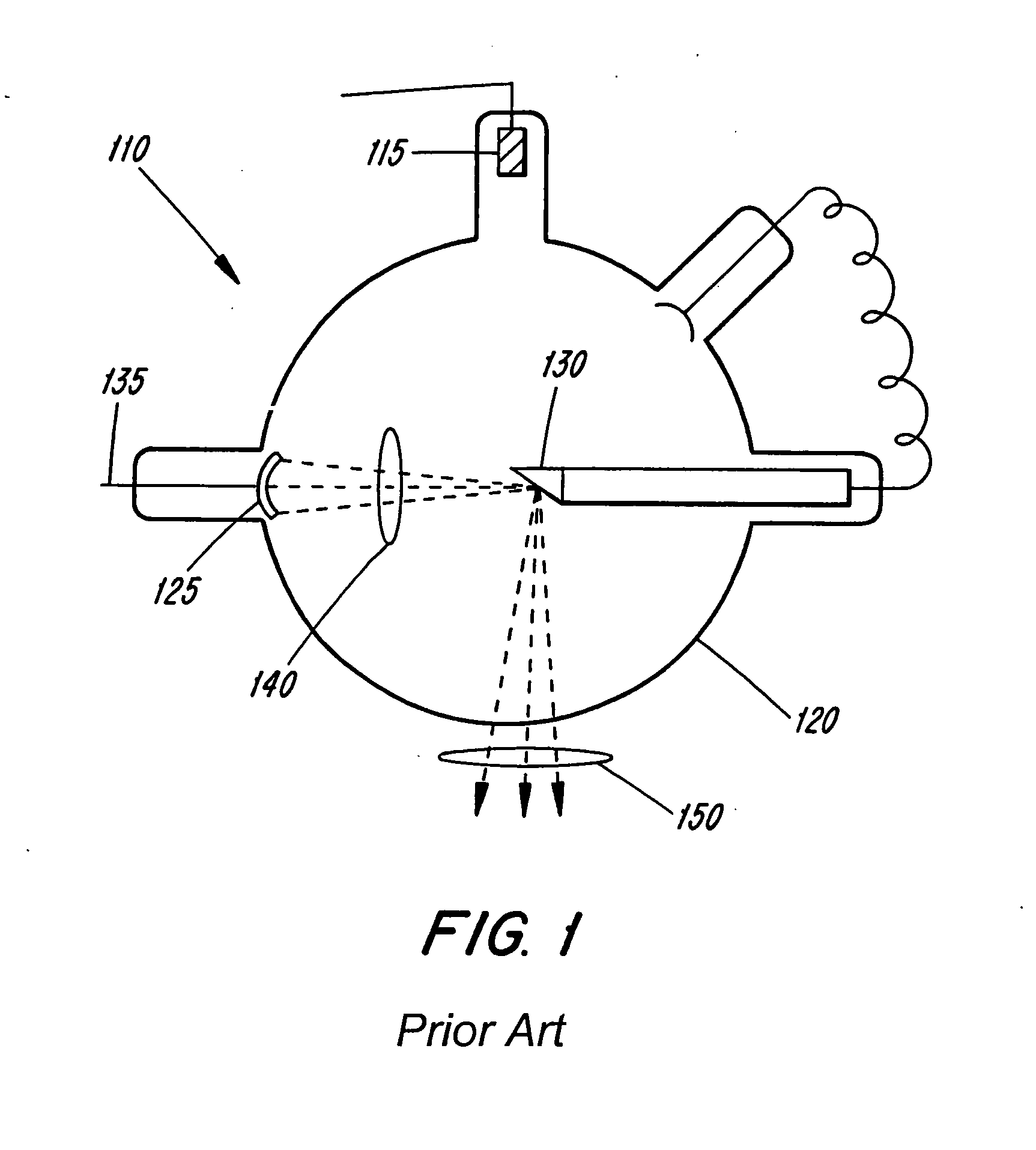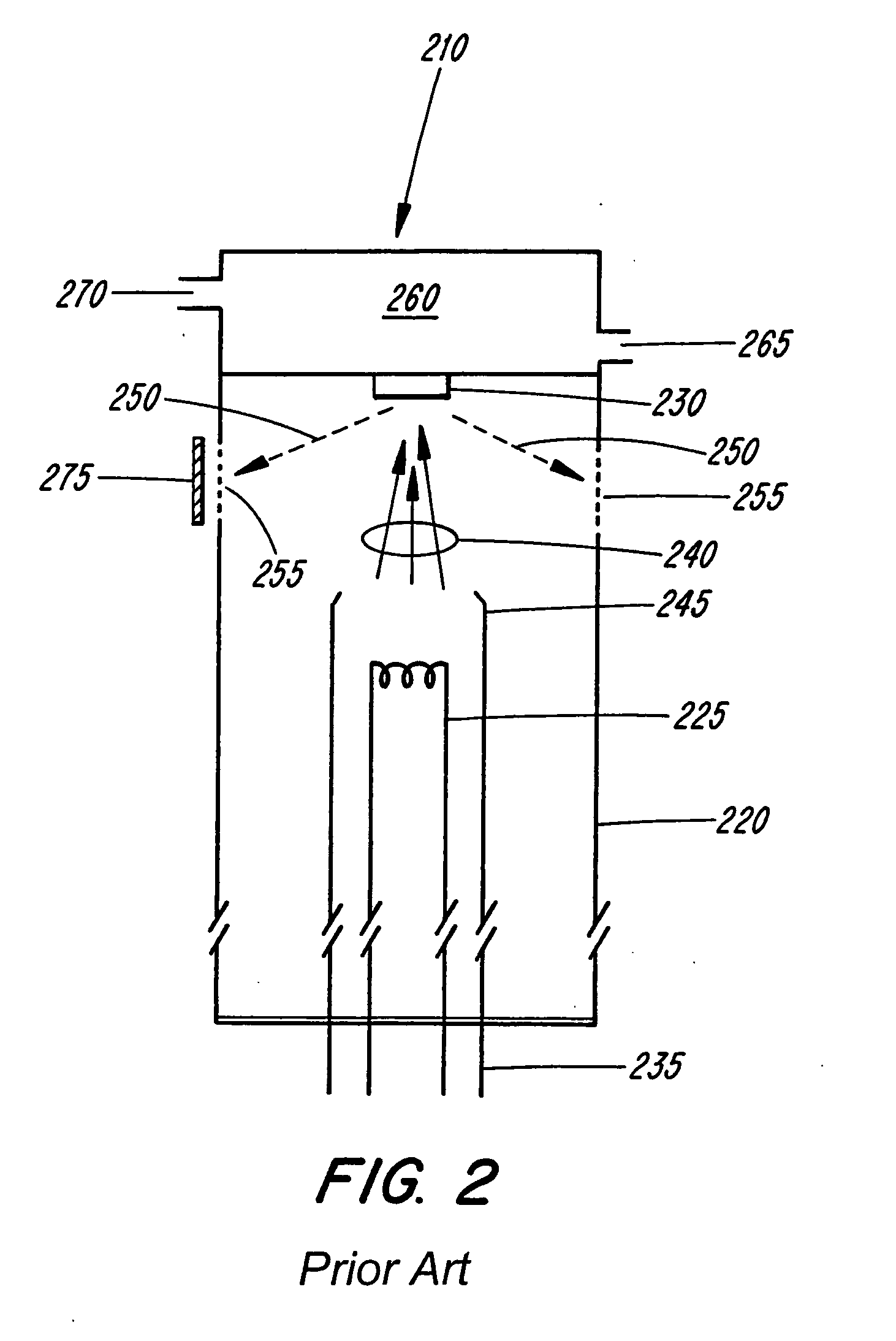Method and apparatus for controlling electron beam current
a technology of electron beam current and electron beam current, which is applied in the field of methods and apparatuses for controlling electron beam current, can solve the problems of limiting the resolution of modern x-ray imaging, affecting the efficiency of x-ray emission, and causing the anode to be heated, so as to achieve the effect of high electron beam current and high electron current density
- Summary
- Abstract
- Description
- Claims
- Application Information
AI Technical Summary
Benefits of technology
Problems solved by technology
Method used
Image
Examples
embodiment 600
[0089] In another embodiment 600, the field emission cathode structure 610 comprises a thin nanostructure or carbon nanotube paper 350 placed on a conducting substrate 300 which, preferably, has a desired metal interlayer 310 such as Fe or Ti. The paper 350 is pressed onto the substrate 300 with the metal interlayer 310, and is preferably vacuum-annealed to achieve adhesion. The paper 350 is further fixed on the substrate 300 by an insulating collar 630. A gate electrode 620, preferably a high melting temperature metal grid, is placed on the insulating collar 630. A power source 640, preferably with variable voltage control, is connected between the gate electrode 620 and paper 350 or the conducting substrate 300.
embodiment 700
[0090] Alternatively, an embodiment 700 may comprise a field emission cathode structure 710 comprising a nanostructure or carbon nanotube film 330 on a conducting substrate 300, preferably with a desired metal interlayer 310, wherein the film 330 is patterned and aligned with the openings in a gate electrode 720 to minimize overheating of the metal grid caused by bombardment with the field emitted electrons. The gate electrode 720, preferably a high melting temperature metal grid, is placed on an insulating spacer 730. The metal grid 720 and the patterned film 330 are placed in an off-set geometry to avoid the problems of overheating the grid 720 due to field emitted electrons striking the grid 720 for extended periods of time.
[0091] In yet another embodiment 800, the field emission cathode structure 810 comprises a nanostructure or carbon nanotube film 330 on a conducting substrate 300, preferably with a desired metal interlayer 310. After deposition, the film 330 is preferably vac...
first embodiment
[0122] In accordance with the present subject matter, a voltage Va is established between cathode 1505 and anode 1508. For a given voltage V and a distance D between the anode and the cathode, the applied electric field, i.e., the x-ray energy, is E=V / D. In electron field emission the electron emission current I is related to the applied electric field E through the Fowler-Nordheim equation as follows:
J=aE2 exp(−bφ3 / 2 / E)
where J is the emitted electron current, φ is the work function of the field emission materials, E is the applied electric field, and a and b are Fowler-Nordheim parameters which are dependent upon the particular setup geometry and nanostructures of the emissive materials. One of ordinary skill in the art knowing the particular setup geometry and the nanostructure of the emissive materials can readily determine a and b.
[0123] Accordingly, it can be seen that the electric field E is proportional to the voltage applied between the cathode and anode (Va), and inverse...
PUM
 Login to View More
Login to View More Abstract
Description
Claims
Application Information
 Login to View More
Login to View More - R&D
- Intellectual Property
- Life Sciences
- Materials
- Tech Scout
- Unparalleled Data Quality
- Higher Quality Content
- 60% Fewer Hallucinations
Browse by: Latest US Patents, China's latest patents, Technical Efficacy Thesaurus, Application Domain, Technology Topic, Popular Technical Reports.
© 2025 PatSnap. All rights reserved.Legal|Privacy policy|Modern Slavery Act Transparency Statement|Sitemap|About US| Contact US: help@patsnap.com



